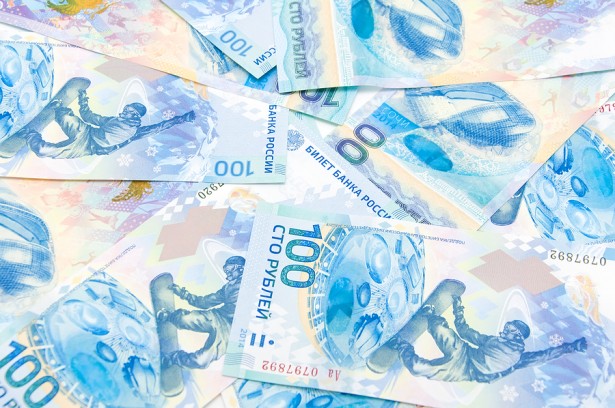Is the Russian Federation on the brink of a recession and financial crisis that could send one of the superpowers tumbling? Officials within Moscow may think so as the Kremlin and central bank continue to reduce economic forecasts, abandon currency controls and foresee sanctions lasting until at least 2017.
The Bank of Russia announced Monday that it ended the ruble’s trading corridor and allowed its rate to float freely in the open market. This means that the nation’s currency presently maintains limited interventions, though it is reducing the supply of rubles to circumvent speculation from traders.
Central bank officials did say, however, that it would intervene if it noticed a crisis in the foreign exchange market.

“As a result of the decision, the ruble’s rate will be formed by market factors that should strengthen the effectiveness of the central bank’s monetary policy,” said Elvira Nabiullina, the Bank of Russia’s governor, in a statement.
Since the beginning of the year, the ruble has lost 30 percent of its value against the United States dollar amid falling oil prices and heightened sanctions from the West over the Ukraine conflict, which has diminished the amount of investments made in Russia.
Russian President Vladimir Putin told a business audience in Beijing, China that Moscow has been seeing intense speculation transpire, a move that he says is creating the drop in the ruble.
“We’re seeing some speculative jumps in the rate but I think this should come to an end in the nearest future in light of the actions the central bank is taking in response to speculators,” Putin said in remarks early Monday.
Some economists are applauding the move by Russia, as some suggest it could help stabilize the nation’s currency.
“Verbal intervention by the central bank is having an effect on the ruble: the threat of sizable one-off FX intervention seems to be working,” said Tatiana Orlova, Russia economist at Royal Bank of Scotland, in an interview with the Wall Street Journal. “Also, President Putin threw his weight behind the CBR’s policy shift this morning, which I think could help to stabilize the population’s expectations.”
Economic forecast
In addition to its revamping of its currency policies, the central bank said in a report that it expects a minimum of three years of economic stagnation.
According to its annual monetary policy strategy document, the Bank of Russia cut its economic growth forecasts to almost zero from 2014 to 2016, citing anticipations of greater Western sanctions until at least the end of 2017: 0.3 percent (2014), zero (2015) and 0.1 percent (2016).
Russia does expect its economy to slightly rebound beginning 2017 when it forecasts an economic boost of 1.6 percent. The central bank also raised its forecasts for net capital outflows to $128 billion this year and $99 billion in 2015.
Meanwhile, the central bank expected the current account surplus to stand at $60 billion next year, and its foreign exchange reserves would dwindle by $42 billion because of forex operations and conversion of sovereign wealth funds.
Finally, the Russian bank does believe oil prices will hover around $95 next year before falling to $90 by the end of the year.
A ban on the dollar?
Last week, it was reported by the Azeri-Press Agency (APA) that the government may approve a bill that would officially prohibit the circulation of the U.S. greenback.
The proposal would ban the ownership and transactions of dollars in Russia. Once the bill is passed and signed into law by President Putin then citizens would be ordered to close their dollar accounts in Russian banks next year and exchange dollars for rubles or other types of currency.
If these dollar accounts are not shut down then these funds would be taken by the Kremlin and cannot be accessed by the account holders after a one-year grace period. Also, the money could be used by the Bank of Russia and other government agencies.




